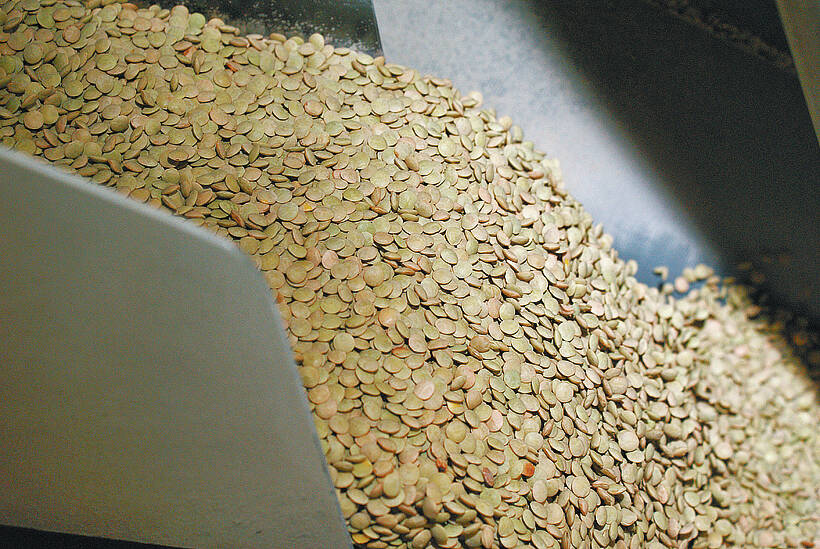Hard red wheat prices could break this year’s previous peak if Canada’s
prairie crop keeps shrinking, says a leading U.S. wheat analyst.
As well, said Bill Tierney of Kansas State University, poor subsoil
moisture in the U.S. hard red winter wheat area should be worrying
markets.
“I think the Minneapolis market will hit a new contract high,” he said.
The trigger could be the next Statistics Canada report if it reveals a
significantly smaller Canadian hard red spring wheat crop than it
Read Also

Green lentil market oversupplied
Farmers in Western Canada can expect price pressure on their new crop of green lentils, as the available supplies among the world’s major lentil-growing nations increase significantly.
forecast in October.
“I don’t think the market has factored that (possibility) in yet,”
Tierney said.
U.S. markets appear to have assumed that Statistics Canada’s October
report closed the story on this year’s prairie crop, Tierney said, and
have now moved on to observe other crops, such as Australia’s. But so
much of the Canadian prairie crop has been downgraded since the survey
was completed in September, and so much is still not harvested, that
Canadian supply could still shock the U.S. market.
“Who gives a damn about the Australian crop?” Tierney said.
“Look at the Canadian crop.”
The Canadian Wheat Board estimates that 15 to 20 percent of the prairie
crop is still in the field. Saskatchewan agriculture estimates 4.8
million acres, equalling 14 percent of provincial seeded acreage, are
still not harvested.
Saskatchewan Agriculture statistician Terry Karwandy said that the
longer the unharvested crop lies in the field, the more it will be
downgraded. And the longer the delay, the less likely it will be to
reach the world market.
“Grazing it will become a real option soon because it will be too late
to combine it,” Karwandy said.
Tierney said any further supply cut from Canada will prod an already
twitchy market. The world has ample supplies of soft and feed wheat,
but “it’s very short of hard red wheat.” Canada is also low on
high-quality hard red spring wheat, since so much was damaged by poor
harvesting conditions.
Tierney said the poor soil moisture situation for the U.S. hard red
winter wheat crop also needs to be watched. Recent rain left adequate
topsoil moisture to start a crop, Tierney said, but that masks a much
more serious situation in the subsoil.
“In the spring you could see good germination and tillering, but
there’s nothing under it,” he said.
“The market hasn’t realized that. They’re just looking at the weather
and the topsoil.”
Tierney said that last year at this time 48 percent of the districts in
the main hard red winter wheat states reported poor subsoil moisture.
An early survey this year showed that about two thirds of the districts
have poor subsoil moisture.
Hard red winter wheat acreage may increase by 10 to 15 percent, but
subsoil moisture conditions weaken the crop’s prospects.
“That’s a reason for the market not to get too bearish,” Tierney said.
“There’s sufficient basis to be very cautious. We’re going to need more
moisture than we’ve got.”
If the situation does not improve, markets will eventually react to
this reality. Until now, the markets have relied on “windshield
surveys” that do not reveal the depth of the problem, he said.
The wheat board’s Oct. 24 Pool Return Outlook bumped up top grades of
wheat by $4 per tonne, but CWB market analyst Dwayne Lee said prices
could rise more if robust U.S. demand continues.















